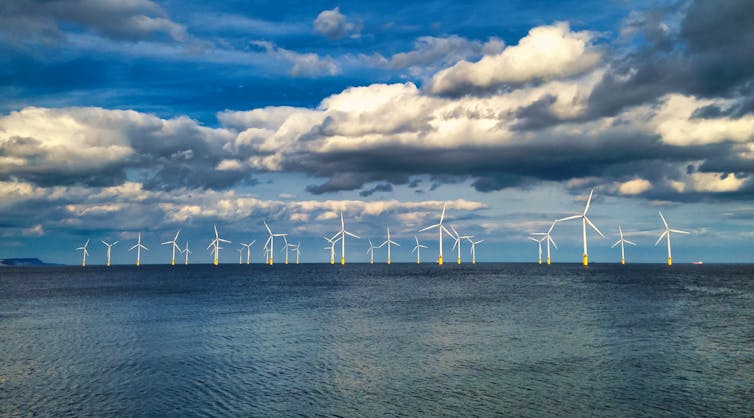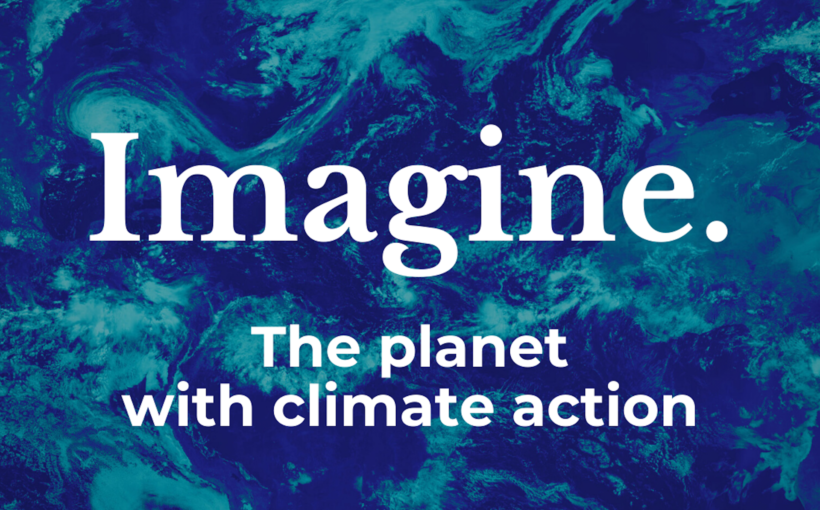Globally, the rate at which people are installing solar panels and buying electric vehicles is “perfectly in line” with what experts have said is necessary to reach net zero emissions by 2050. That’s according to Fatih Birol, the economist who leads the world’s energy watchdog, the International Energy Agency (IEA).
Thanks to a “staggering” rise in clean energy generation and investment over the last two years alone, the prospect of halting global heating at 1.5°C remains intact, he added. After a summer of unparalleled climate disasters in Libya, Greece and Canada, should dread turn to optimism?

Don’t have time to read about climate change as much as you’d like?
In a recent update on humanity’s progress with cutting greenhouse gas emissions, the IEA concluded that by 2030:
- fossil fuel demand must fall 25%
- the energy efficiency of homes, vehicles and other appliances must double
- methane emissions from the oil and gas sector must fall 75%
The report assumes that renewable energy capacity will need to triple and replace coal, oil and gas at a rapid pace by the end of this decade to guard against catastrophic levels of warming. But despite sources like solar consistently defying even the most bullish predictions, fossil fuels have hardly budged: they supplied 82% of the world’s energy last year and 87% in 2000. Why?

Fossil fuels linger, wind power stalls
“Rapidly increasing renewable energy hasn’t cut coal and gas consumption at the same rate because humankind is using a lot more electricity than we used to, especially in Asia,” says Malte Jansen, a lecturer in energy and sustainability at the University of Sussex.
“[In Europe and North America] renewable energy has slowly eaten into the proportion of energy generated by fossil fuels, while all other energy sources (nuclear, hydro, biomass) have remained about the same. In Asia, electricity demand has tripled since the 2000s, with the bulk of this energy coming from fossil fuels.”
And while the report was glowing in its assessment of solar power’s performance, it noted that planned projects for generating wind energy this decade trail what the IEA says will be necessary by 2030. Jansen says wind is a particularly valuable energy source during winter, when energy demand peaks.
Unfortunately, the wind industry has been buffeted by inflation.
“For those involved in the construction of an offshore wind farm, this means the cost of both the physical parts (such as the turbines) and the debt (bank loans) has gone up,” says Phil McNally, a research fellow in electricity markets at UCL.
McNally does not believe this setback heralds the end of cheap offshore wind, as some have claimed. Instead, he argues, it means governments must produce strategic plans to grow the sector which include how much energy they wish to procure in auctions with developers.

Net zero must come sooner
According to the IEA, “almost all countries” will also need to move their net zero target dates forward by several years. Most developed countries, including the US and Australia, aim to fully decarbonise by 2050. Under the UN principle of common but differentiated responsibilities, developing countries have a bit longer: India plans for 2070, for example.
A team of energy experts at Australian National University (with support from nearly 900 engineers) recently argued that Australia could hit net zero as early as 2035.
But in the UK at least, government policies on net zero are moving in the opposite direction. Prime Minister Rishi Sunak recently scrapped requirements on landlords to raise the energy efficiency of their properties and delayed the phase-out of petrol and diesel car sales from 2030 to 2035.
“As my own analysis has shown,” says Tim Jackson, a professor of sustainable development at the University of Surrey, “the UK’s fair share of the global carbon budget, taking into account the development needs of the poorest parts of the world, will be exhausted before 2030. Forget 2050. The science is clear. Delay is tantamount to capitulation.”
We’ve been here before
What can earlier energy transitions teach us about what is happening today?
According to energy historian Vaclav Smil, past energy transitions took on average 50-75 years to ripple through society. We no longer have that kind of time says Liz Conor, an ARC Future Fellow at La Trobe University.
“To farm fields and build cities, we’ve gone from relying on human or animal muscle to wind and water to power sailboats and mill grain. Then we began switching to the energy dense hydrocarbons, coal, gas and oil. But this can’t last.”
“We were first warned in 1859 that when burned, these fuels add to the Earth’s warming blanket of greenhouse gases and threaten our liveable climate,” she says.
Environmental limits have spurred the shift to new energy sources before. Take England’s transition from burning wood to coal.
“England was once carpeted in forest. Endemic deforestation drove the change to coal in the 16th and 17th centuries. Most English coal pits opened between 1540 and 1640,” Conor says.
Later, dwindling whale populations saw the US abandon whaling as a source of fuel and lubricant for crude oil extraction.
But the dominance of coal, oil and gas today was not inevitable. Conor points to 1850s New England, where steam generated from burning coal was three times more expensive than water for powering textile mills. Smil’s research documents how waterwheels and turbines “competed successfully with steam engines for decades”.

“The energy of flowing water was free. Digging up coal was labour-intensive. Why did steam win?” asks Conor.
The answer, she says, referring to work by human ecologist Andreas Malm at Lund University, is capital.
“Locating steam engines in urban centres made it easier to concentrate and control workers, as well as overcoming worker walk-outs and machine breaking,” Conor says.
Today’s energy transition requires another active intervention, she adds.
“Once solar panels and wind turbines are built, sunlight and wind are free. It is the resistance of the old guard – fossil fuel corporations – that is holding us back.”
![]()



